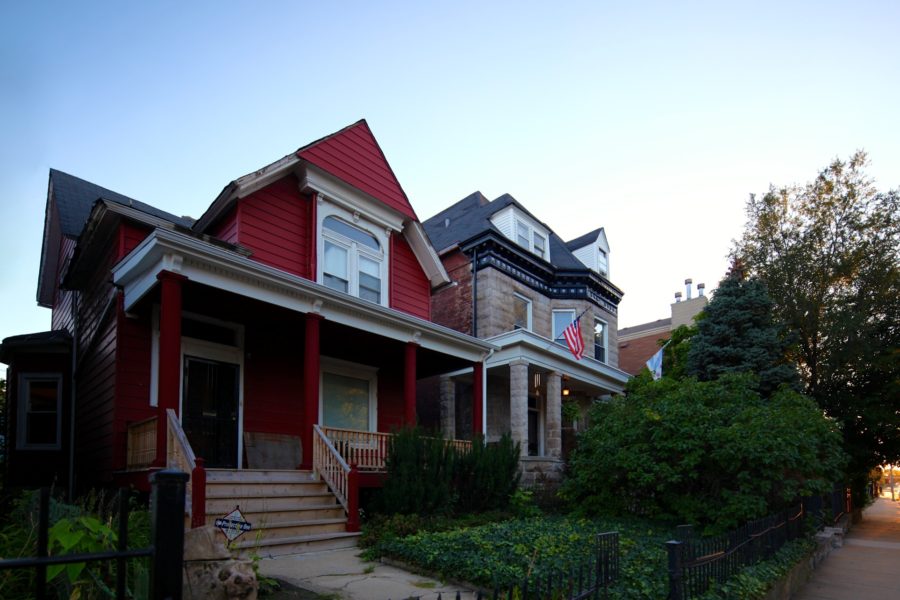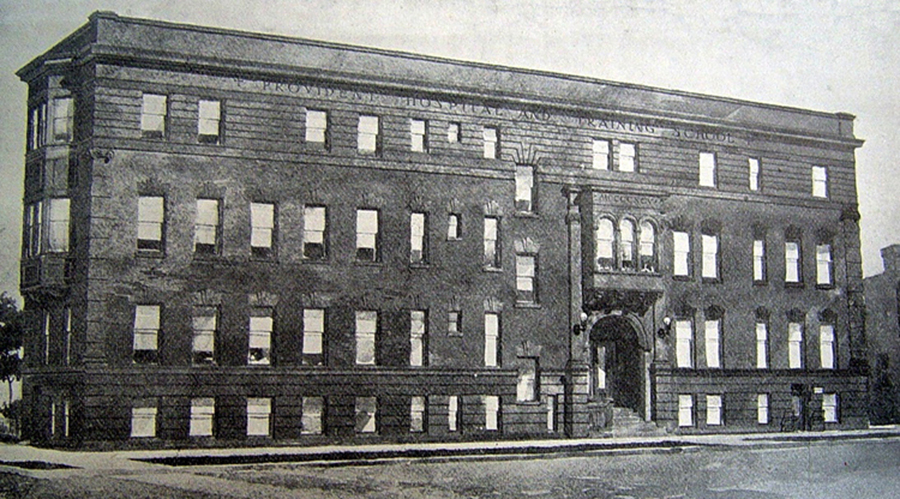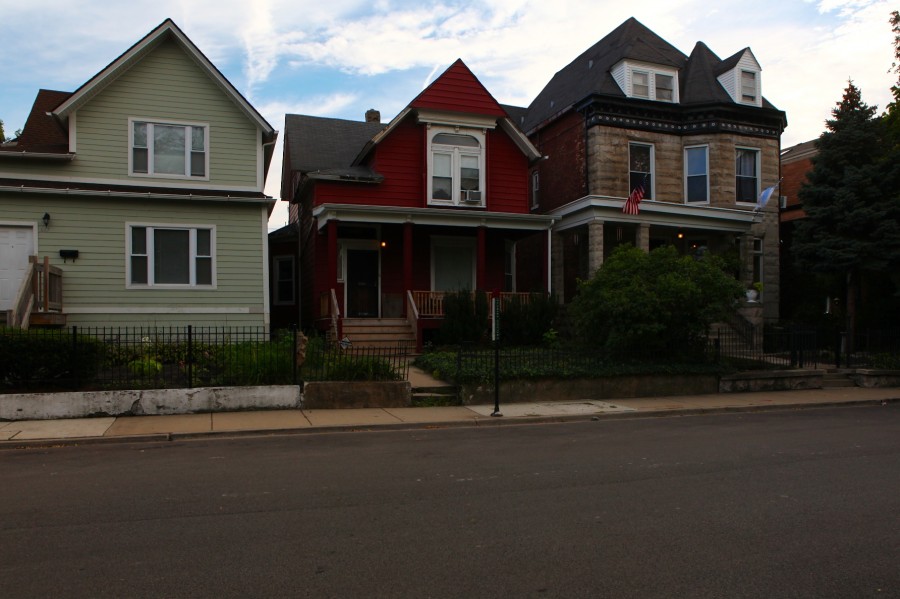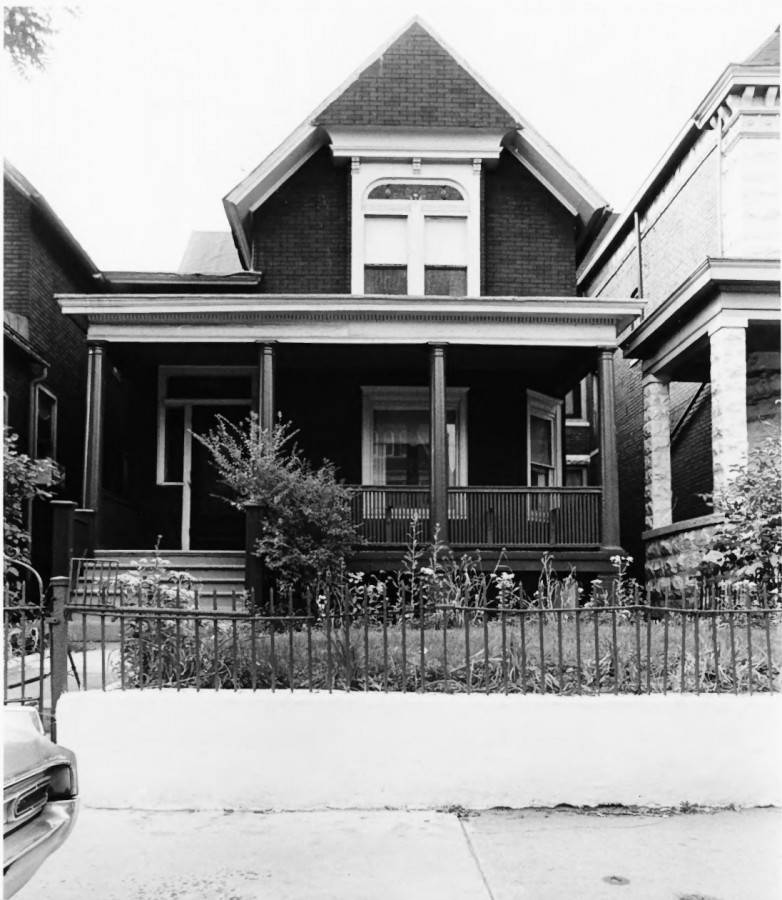43rd Street Bronzeville Walking Tour, Part 2: ‘Doctor Dan’

Now that we’ve seen the fabulous greystones on Dr. Martin Luther King Drive, let’s continue with Part 2 of our series, and walk further down 42nd Street. A modest red Queen Anne house with subtle cornice bracketing is a neighborhood landmark because of an extraordinary man who once lived there.
445 E. 42nd Street was for decades the home of Dr. Daniel Hale Williams, also known as “Dr. Dan.” He is widely credited as the first to successfully perform surgery to repair a damaged heart, and his daring and skilled feat made headlines around the world in 1893.

Dr. Williams as a young man
A Strong Foundation
After leaning toward a few professions early in life, including barber, preacher, and lawyer, Daniel Williams decided to become a doctor. At the time, there were two medical schools in Chicago: Rush Medical College and Chicago Medical School.
Williams decided to go to Chicago Medical School, and not long after in the 1880s competition between the schools grew. Chicago Medical School emerged with longer attendance requirements: three terms of six months compared to two terms of five months at Rush. Students of Chicago took pride that their institution was focused on quality and not quantity.
This stellar education set the bar for a lifelong career of outstanding practice in the medical field.

Provident Hospital in 1896, image courtesy of US National Library of Medicine
The First Milestone: Provident Hospital
Emerging from this education, Dr. Williams began his career by establishing himself as both intelligent and caring. The Provident Foundation gives a summary of the hospital’s early roots:
Considered a thoughtful and skilled surgeon, Dr. Williams’ practice grew as he treated both black and white patients. But he was acutely aware of the limited opportunities for black physicians. In 1889, he was appointed to the Illinois State Board of Health (now known as the Illinois Department of Public Health), and worked with medical standards and hospital rules. He was aware of the prejudice against black patients in hospitals and the inferior treatment that was often dispensed. In 1890, Reverend Louis Reynolds, whose sister Emma was refused admission to nursing schools because she was black, approached Dr. Williams for help. This led to the founding of the Provident Hospital and Nursing Training School in 1891. The first years of the hospital were challenging, but successful. Dr. Williams insisted that his physicians remain abreast of emerging medical discoveries.
“Sewed Up His Heart!”
Although founding the first hospital owned and operated by African-Americans was an accomplishment itself, his achievements were far from over. Perhaps his most widely known accomplishment is the first successful surgery to repair a damaged heart. This was at a time when treatment of heart ailments involved remedies of dubious value. This was illustrated in a 1954 biography of Dr. Williams:
Only two years before, in 1891, C. W. Mansell Mollin’s book on Surgery had reached America. Many regarded it as the “best in the English languages,” and yet all that Mollin, Fellow of the Royal College of Surgeons, could say was that the only treatment [for heart injury] “likely to be of any avail is absolute rest, cold, and opium; […]”
There was certainly not much to guide or encourage Dr. Dan. He would run no professional risks if he gave the man an opiate and let it go at that. Most doctors would approve. Of course the man would then probably die. But if he attempted surgical interference, if he took up Roberts’s long-neglected challenge, he would have to venture into unchartered territory, with unforeseeable results. If he failed, he could expect nothing but condemnation from most of the profession.
Dr. Williams, seeing the urgency of the situation, decided to act. He sent word to a few medical friends inviting them to watch, and 6 doctors (4 white and 2 African-American) gathered in a makeshift operating room.
“Sewed Up His Heart!” was the print headline seen around the world to describe this pioneering operation.
Was Dr. Williams the First?
History is clear: although he had no knowledge of a prior attempt, Dr. Williams was not the first to perform this type surgery. Two years earlier in 1891, Dr. H.C. Dalton in St. Louis attempted to repair a damaged heart via surgery.
Dr. Benjamin Rickets, a Fellow of the American College of Surgeons, published the Surgery of the Thorax and its Viscera in 1918 and a foremost expert on this type of procedure. He was knowledgeable of both cases and although early on mentioned both events, he quickly dropped Dalton’s case and only mentioned Dr. Williams’ in later published works and in lectures. It is speculated that this was because Dalton’s patient never recovered. Dr. Williams’ patient lived a full life, in fact outliving the man who saved him.

Portrait of Doctor Daniel H. Williams at Provident Medical Center
A Lifelong Legacy
Whether or not he was the first to perform the surgery is unimportant. The important part is his legacy of spreading medical knowledge and promoting equality. His life story is so extraordinary it almost seems fictional:
- founded the first black-owned and operated hospital in America (Provident Hospital)
- performed the first successful surgery to repair a damaged heart
- performed one of the earliest successful attempts at splenorrhaphy (repairing the spleen)
- served as Chief Surgeon of the Freedmen’s Hospital in Washington, D.C.
- co-founded and served as Vice-President of the National Medical Association
- received honorary degrees from Howard and Wilberforce Universities
- was a charter member of the American College of Surgeons

Dr. Williams’ house is the red one in the middle, on 445 E. 42nd Street.
That he did this as a man of color in an era of rampant and overt racial discrimination is even more unbelievable. His advances left a substantial mark on the practice of medicine, and you can see where he lived on 42nd Street in Bronzeville.
To learn more, TMW Media published a short documentary on Doctor Williams’ life.

Daniel Hale Williams house in 1974. Image courtesy of National Park Service
Trivia
Dr. Daniel Hale Williams was mentioned in the Stevie Wonder song Black Man:
[…] Heart surgery
Was first done successfully
By a black man
In a few days will finish up this series with Part 3, where we’ll look at vacant community space that will soon come back to life. Part 3 will also include a map with landmarks and notes of the walking tour of this culturally significant part of Chicago.
References and Further Reading
- History: Dr. Daniel Hale Williams (Provident Foundation)
- Daniel Hale Williams (Pittman Publishing Corporation, 1954, 1968)


Wow thanks so much. I grew up on 42nd place and had no idea. I knew growing up in this neighborhood was special,but had no idea how much.
I grew up on 43rd and Langley and I always thought my street was the best street on the southside, would like to find out more about 43rd st.